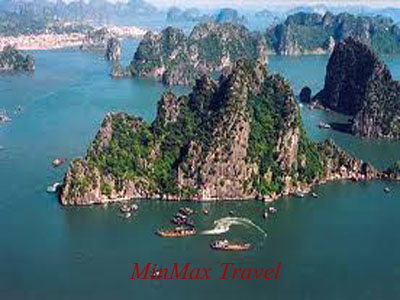
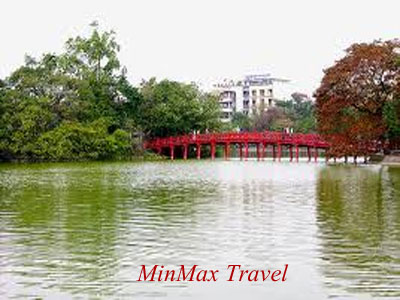
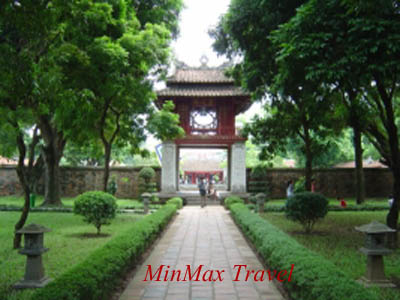
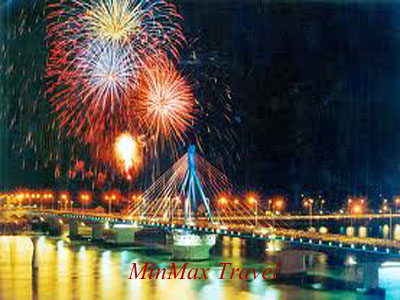
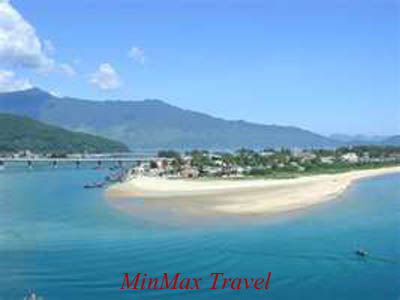
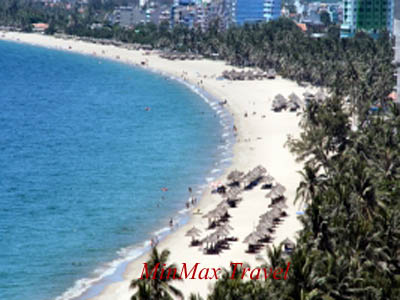

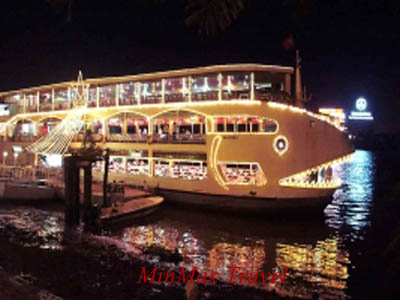
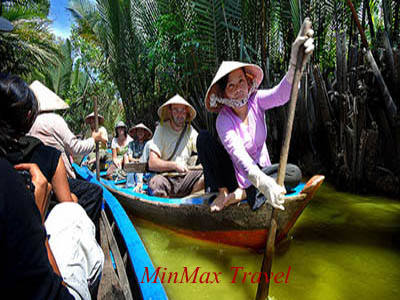
| Broad bean is a kind of climbing plant. It only needs a simple trilles from some branches of tree to cling. It is easy to plant broad bean, since the tree grows very fast. Very soon from the sowing– time, the tree will rebound from the ground. Broad bean is very sweet, fragrant and nourishing. When broad bean is old and dry, its seeds will be taken out and used for cooking sweetened porridge. 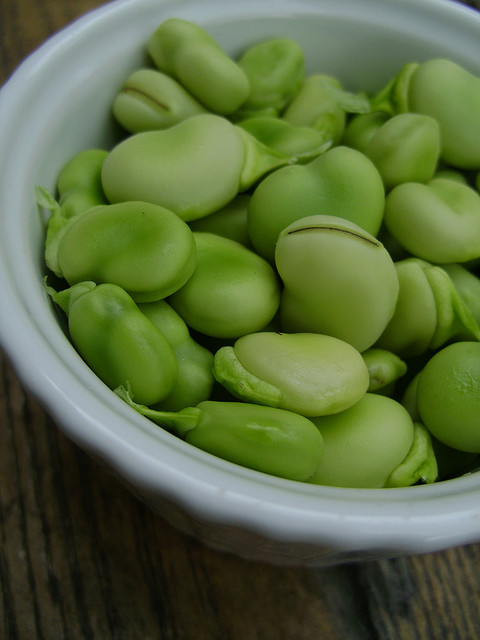 The process of making broad bean sweetened porridge is quite simple. Firstly, the bean must be soaked into water to become soft. Then, lightly remove the thin peel of the seed; make sure that the seed will not be broken. Next, steam the bean and embalm it with sugar in about 15 minutes. Then, pour water and cook it with small fire. Mingle tapioca flour with water and slowly pour it into the pot. To make the dish more tasty and fragrant, add some garlic, a little salt and some fragrant pandan leaves. All the steps from stirring and spooning must be done carefully and lightly in order not to make the beans broken. When the dish is done, it looks so appetizing with the white and well – rounded bean floating on the yellow syrup. Broad bean sweetened porridge is attractive for the greasy taste and the fragrance of the bean, as well as the refined sweet from the combination of syrup and the bean. Some people also prefer to enjoy broad bean sweetened porridge with other kinds of sweetened porridge. However, it is highly recommended that the dish should be enjoyed when it is iced. Also, serve it with coconut milk and the dish will show how tasty it is. |
| Coffee and the Hanoians The Hanoians drink a lot of the dark, caffeinated beverage and prefer sipping their stronger blends outside in front of a small shop with some sweet milk and a 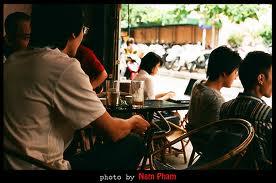 spoonful of sugar. Every morning, on hot days of summer and cold and dull days of winter, you can easily see some here with a cup of coffee in one hand and a newspaper in the other. spoonful of sugar. Every morning, on hot days of summer and cold and dull days of winter, you can easily see some here with a cup of coffee in one hand and a newspaper in the other.For many Hanoians, the most important factor of a café is not its luxuriousness but the quality of the product. Old people love cafés which have been around a long time, located on old streets or inside deep alleys. Office workers like cafes with romantic and quiet styles like those in Pho Co Quarter. Young people prefer the noisy and busy atmosphere of modern and luxury or pavement cafés. Street Coffee… Soaking up the rhythms of the street and embracing Hanoi from all of its sides, from old to new ones, and from traditional to modern & quirky ones, you will tenderly recognize that, nothing can be better refresh us after hardworking hours than a cup of coffee on a street near Sword Lake (Hoan Kiem Lake). Basking with sunshine in the afternoon when there’s less noise from automobiles, Hanoi ends a day and opens a new paradise for culture experiences. Taking over a legacy from bygone years with the involvement of an irresistible French factor, the Vietnamese have embraced café culture in a great way. There are so many famous coffee shops in Hanoi, like Nang café (6 Hang Bac), Nhan (39D1 Hang Hanh), Quat (Quan Thanh), Quynh (Bat Dan) to Giang (Hang Gai and Lam (60, 91 Nguyen Huu Huan)… Chairs are small, literally child-sized, and are sometimes made of blue plastic or painted wood. The tables are covered with glasses of ca phe den (black coffee) or ca phe sua da (iced coffee), which come with their own picturesque drip top. Not only just for connoisseurs, these places are idea for having gossip, meeting old friends, talking to pass time of day, stealing precious moments for romantics … 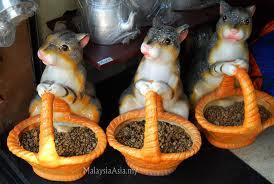 Now, let’s follow a coffee connoisseur… A good example of the authentic Hanoi cafés is Hang Hanh, an atmospheric slender street veering off the city’s central Hoan Kiem Lake. In the afternoon, one may find himself inexplicably drawn to its’ wall-to-wall cafés which unfold below the shady boughs of leafy trees. Here, the annoying young and cool Vietnamese often sit and watch the world in front of their eyes. In late afternoon, with the last rays of sunshine, the place starts to buzz. At weekends, it is positively heaving with dating couples or gangs of youths desiring to be couples. If this sounds too frenetic, a more subdued place like Giang Café can be chosen! Though situated in a busy tourist shopping street, the tiny confined Giang Café attracts the serious permanent coffee lovers and soccer addicts.
Cyclo cafe in Hanoi
My next stop is Lam café - the perfect refuge for artists, poets and thespians to refresh their minds for creativeness. Situated on a shaded street, it will bring you the relaxed moments by the simple but artistically-decorated bamboo furniture, colorful framed oil paintings on the wall, ceiling fans as well as wooden table with a lot of tiny china teapots.Yet, if you ask me about my favorite one, I will not hesitate to answer that it is Quynh Café. Down in a quiet side street, this unassuming cafes’ entrance is marked by a simple red lantern and ornate ironwork doors. Stepping inside, you not only see the bamboo furniture on tiled floor but also the tiny plants adorn wooden shuttered windows. Looking on damp-streaked walls, you may surprise with wooden arrows and trumpets, farming implements and ancient hunting pistols. Breathing the cool air from the antiquated table-fan, wallowing in soft French background music, you will desire to stay longer... Coffee drinking from another approach The resurgence of tourism to these fragrant shores has led to the resurrection of the wonderful old ambience of former colonial times in many Hanoi cafés. Delightful cafés are now housed in elegant French-style villas with exquisite silk prints, meticulously polished wooden floors and pot-planted courtyards or serve delicious food all day and evening. Street cafés like the La Terrasse du Metropole on Ngo Quyen and Le Phung Hieu or Highlands Café, 84 Nguyen Du are the typical examples! Hanoi’s coffee culture calls on coffee addicts from every corner of the globe! |





 There are 100 steps up the side of the hill from the road to the entrance of the temple. At the entrance is a large arched triple gate. At the front of the temple, there are inscriptions of verses on the wall. In front of the temple is a statue of Avalokiteshvara bodhisattva, erected in 1963.
There are 100 steps up the side of the hill from the road to the entrance of the temple. At the entrance is a large arched triple gate. At the front of the temple, there are inscriptions of verses on the wall. In front of the temple is a statue of Avalokiteshvara bodhisattva, erected in 1963. Located on a hill of 4ha on Nguyễn Văn Trổi Street, nearly 1 kilometer northwest of Da Lat city, Linh Son pagoda was built from 1936 to 1940 through donations from Buddhists everywhere, especially the efforts of Võ Đình Dung and Nguyễn Văn Tiếng.
Located on a hill of 4ha on Nguyễn Văn Trổi Street, nearly 1 kilometer northwest of Da Lat city, Linh Son pagoda was built from 1936 to 1940 through donations from Buddhists everywhere, especially the efforts of Võ Đình Dung and Nguyễn Văn Tiếng.